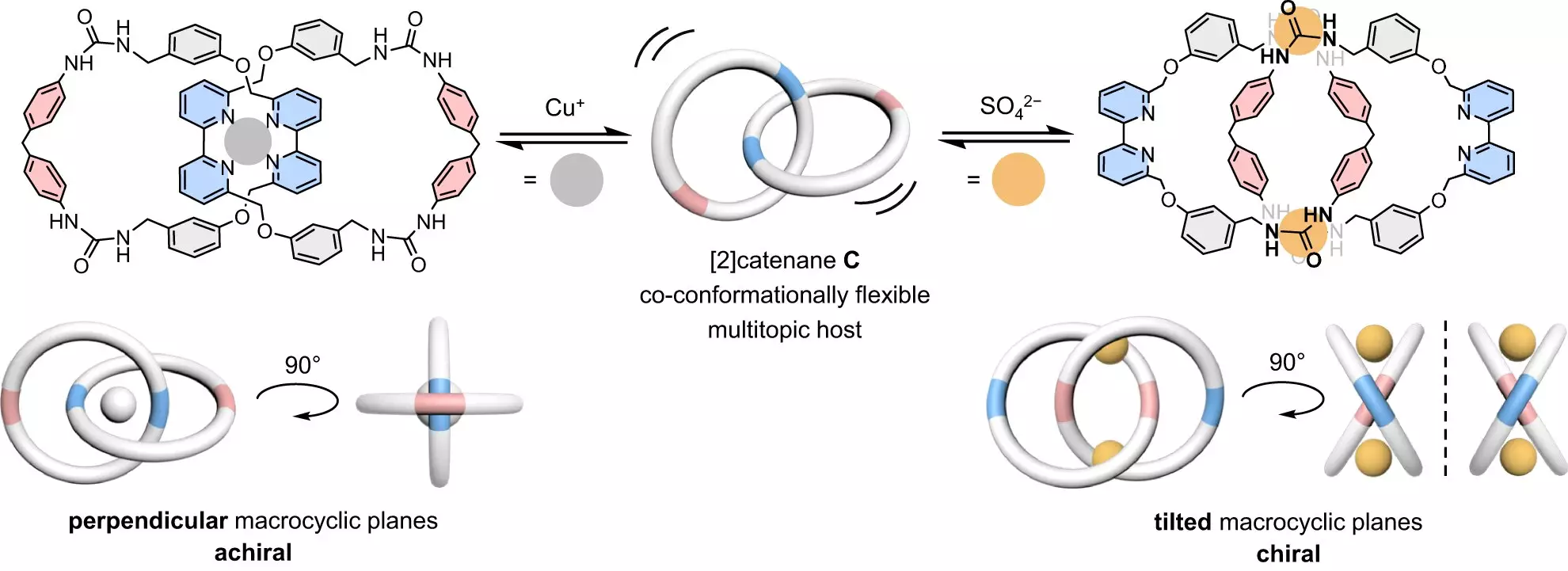Imagine everyday objects like handcuffs or metal chains. At first glance, they might seem solely functional: locking mechanisms that serve specific, straightforward purposes. However, a closer examination reveals a fascinating principle at play: a collection of rigid components that harmoniously provides flexibility and strength. This very concept serves as the foundation for a cutting-edge research area within chemistry, focusing on catenanes—complex molecules formed by interlocking ring structures. Unlike their commonplace counterparts, catenanes promise to revolutionize fields like nanotechnology and molecular engineering.
The beauty of catenanes lies not just in their unique structural properties, but in their potential applications. Despite the challenges that come with their synthesis, which have hindered broader exploration, they present an exciting frontier for creating molecular devices. By mimicking the most sophisticated locking and unlocking mechanisms found in everyday life, researchers are opening doors to unprecedented innovation.
Breakthrough in Selective Ion Binding
A recent discovery by a research team led by Professor Ho Yu Au-Yeung at The University of Hong Kong showcases the remarkable potential of catenanes as molecular receptors. The team’s innovative approach involved creating a catenane made of two rigid macrocycles that are freely rotatable. This design enables the catenane to bind selectively and effectively to both a copper(I) cation and a sulfate anion, despite their dissimilar structures and charges.
The conventional wisdom suggests that like charges repel while opposite charges attract, complicating the design process for a binding site that accommodates both cations and anions. What sets Professor Au-Yeung’s team apart is their ingenious solution: by integrating distinct binding sites for these ions within each interlocked ring, they crafted a flexible host that can assume different forms, adapting to the geometric needs of the ions it interacts with. This adaptability not only enhances the efficiency of the binding process but also mirrors nature’s ingenuity, much like a chameleon alters its appearance to blend into diverse environments.
Implications for Environmental and Medical Applications
The ramifications of this research extend far beyond mere chemistry. Copper(I) and sulfate ions play crucial roles in biological processes, from cellular growth to metabolic functions. The ability of this catenane to selectively bind these ions opens possibilities for environmental monitoring. Researchers can harness this technology to extract and recycle vital nutrients from various environmental samples, aiding in the restoration of ecological balance.
Moreover, the technology holds immense potential for medical diagnostics. As routine tests for electrolytes like sodium and chloride are crucial for assessing overall health, the development of catenanes offers a pathway to sophisticated diagnostic tools. Recognizing and binding specific ions and minerals can lead to improved monitoring of health conditions and tailored therapeutic interventions. It is a possible game-changer for health professionals who seek greater precision in diagnostics, providing them with a powerful resource in their arsenal.
The Future of Catenane Research
Looking ahead, Professor Au-Yeung and his team are not resting on their laurels. They seek to develop even more sophisticated catenane architectures capable of binding multiple ions simultaneously. This ambition signifies a paradigm shift in molecular design, with the potential to create multifunctional molecular machines. Each new iteration could lead to enhanced specificity and efficiency, expanding the scope of applications in both environmental and medical fields.
In a world grappling with significant environmental and health challenges, innovative solutions such as those offered by catenane technology provide a glimmer of hope. As researchers continue to unlock the hidden potential of these molecular chameleons, the fusion of chemistry and technology may very well yield solutions that redefine our understanding of material interactions and functional applications. The journey has just begun, but the implications of this research could resonate throughout various fields, offering a promising glimpse into the future.

